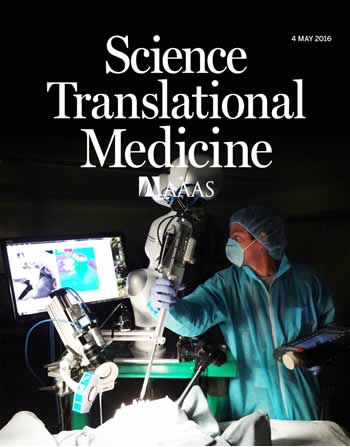Robot Surgeon Outperforms Humans Performing The Same Procedure
/Score another victory for machines: a surgical robot outperformed humans and robot-assisted human operators in a soft-tissue procedure, bringing us one step closer to automated care...
 We're not quite at the cosmetic surgery carwash yet, but we're headed in that direction. Could we be a few years away from robotic liposuction?
We're not quite at the cosmetic surgery carwash yet, but we're headed in that direction. Could we be a few years away from robotic liposuction?
The Smart Tissue Autonomous Robot (STAR) was designed at the Children's National Medical Center in order to bring some automation into soft-tissue surgery, a field where soft-and-squishy makes it more difficult to apply robotics due to the complexity of spatial relationships.
“As surgeons, we usually do three things,” said lead researcher Peter Kim, of the Sheikh Zayed Institute in a press call, “we use our vision and we use our hands for dexterity and then we use our mind as cognition to make judgment and then carry it out. We improved on all these things.”
STAR uses advanced computer vision tech that uses fluorescent markers and 3D cameras to get detailed views of the surgical site before it chooses from a variety of surgical techniques programmed into its database. Once it's chosen a path, it carries out the action with the machine-like precision, speed and efficiency of, well... a robot.
See it in action here. The paper describing STAR’s success was published today in the journal Science Translational Medicine.
Here's the press release:
Putting surgery one step closer into the realm of self-driving cars and intelligent machines, researchers show for the first time that a supervised autonomous robot can successfully perform soft tissue surgery. The robot outperformed expert surgeons and current robot-assisted surgical techniques in open bowel surgery in pigs. By taking human intervention out of the equation, autonomous robots could potentially reduce complications and improve the safety and efficacy of soft tissue surgeries, about 45 million of which are performed in the U.S. each year. Robot-assisted surgery currently relies on the surgeon to manually control it, and outcomes can vary depending on the individual's training and experience. Efforts in automating surgery have made headway for hard tissues, such as in bone cutting, but have proven challenging for soft tissues, which are malleable and mobile and, thus, more unpredictable. Azad Shademan and colleagues designed and programmed Smart Tissue Autonomous Robot (STAR) to perform complex surgical tasks. Equipped with a robotic arm and surgical tools, STAR combines smart imaging technologies and fluorescent markers to navigate and adapt to the complexities of soft tissue. The researchers tested their robot against manual surgery by expert surgeons, laparoscopy, and robot-assisted surgery with the da Vinci Surgical System. Under supervision, STAR proved superior to all approaches in suturing and reconnecting bowel segments, known as intestinal anastomosis, both ex vivo and in vivo in pigs. The animals survived the operation with no complications. The researchers say that with further development, autonomous robotic surgery may one day take human error out of the operating room, improving care for patients undergoing bowel surgery, tumor removal, and other soft tissue surgery.





